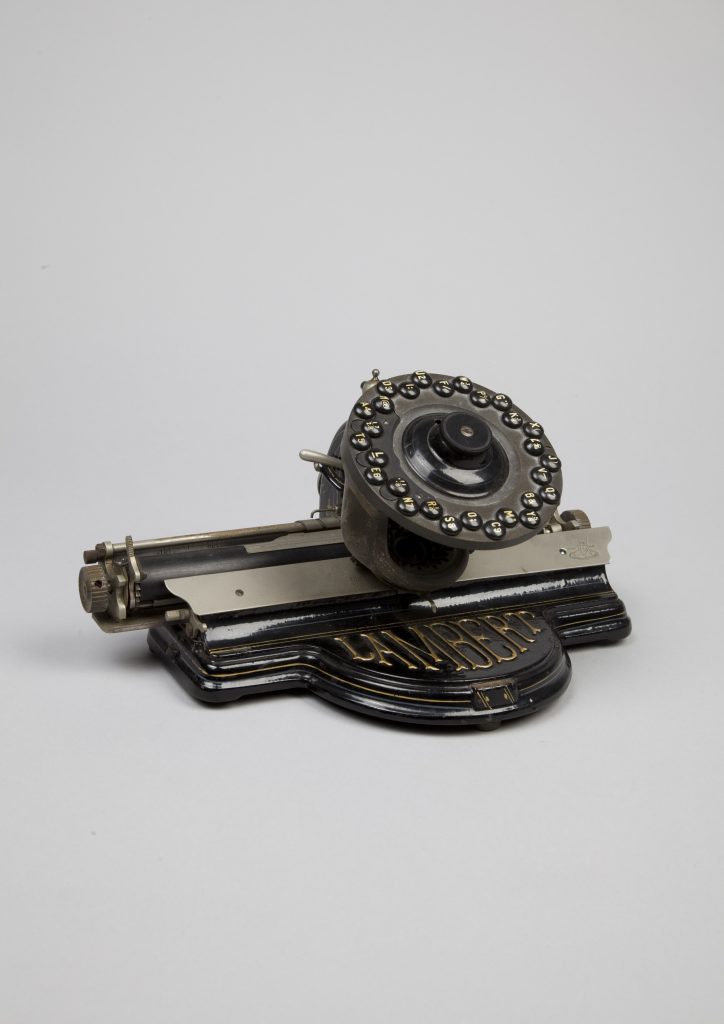Celebrating The Gramophone Company Factory in Hayes
Queens Dolls House Record – EMIAT.322 This record was made specially for Queen Mary’s Doll’s House and the British Empire Exhibition at Wembley of 1924. It measures just 3.4cm across and plays ‘God Save The King’ (sung by Peter Dawson). A total of six different records were made for the Doll’s House, and due to… Read more »
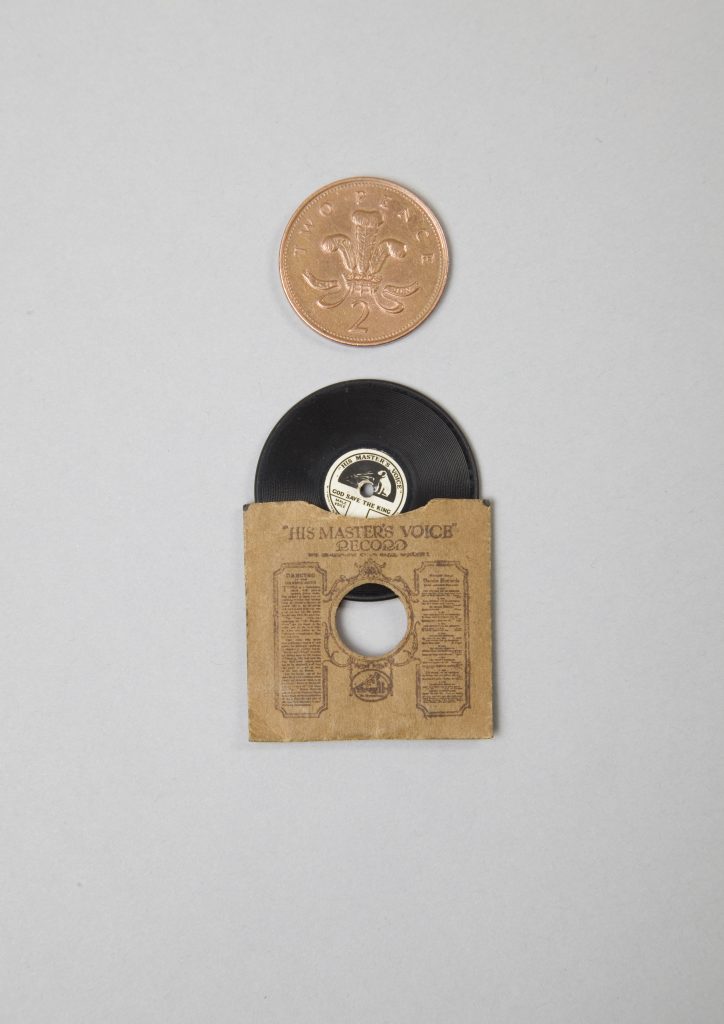
Queens Dolls House Record – EMIAT.322
This record was made specially for Queen Mary’s Doll’s House and the British Empire Exhibition at Wembley of 1924. It measures just 3.4cm across and plays ‘God Save The King’ (sung by Peter Dawson).
A total of six different records were made for the Doll’s House, and due to popular demand, The Gramophone Company made replicas of the ‘God Save The King’ disc for public consumption. They were sold through accredited dealers for 6p each.
Production: The Gramophone Company
Place: Hayes England
Date: 1924
The First Record Pressed at Hayes – EMIAT.323
This 10“ 78rpm record was the first record to be pressed at The Gramophone Company’s Hayes Factory. It has gold and cream handwritten label which indicates that this record was pressed on the 3rd of June 1908. The record is single-sided, meaning that it only has music recorded on one side. On the reverse, however, is the famous Zonophone Trademark.
Production: The Gramophone Company Ltd,
Place: Hayes, England
Date: 1908
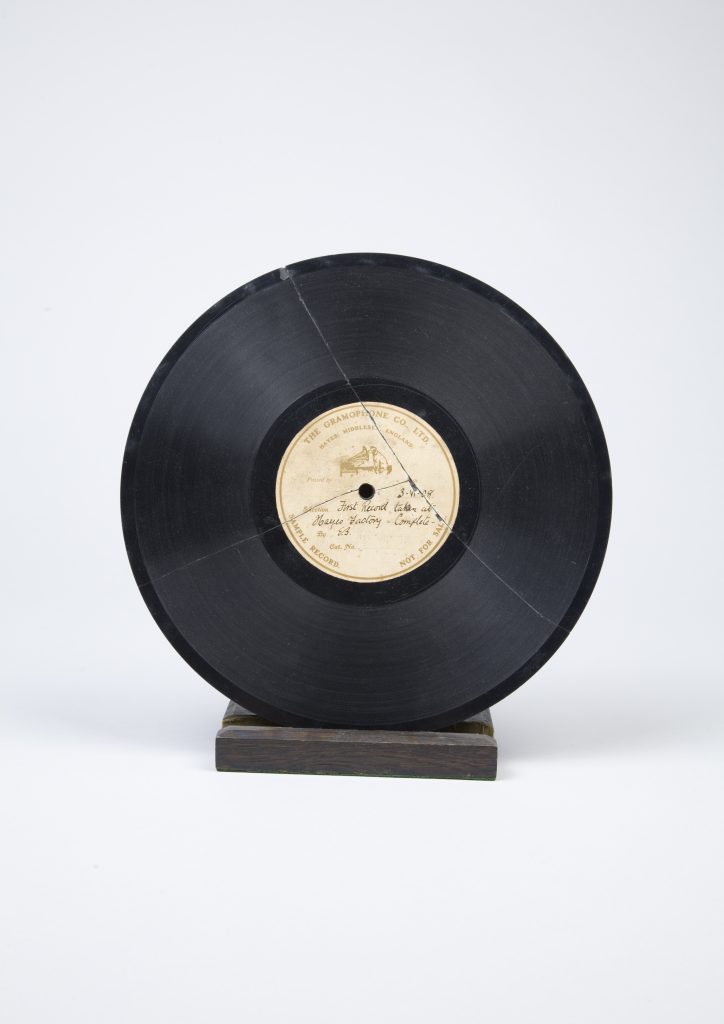
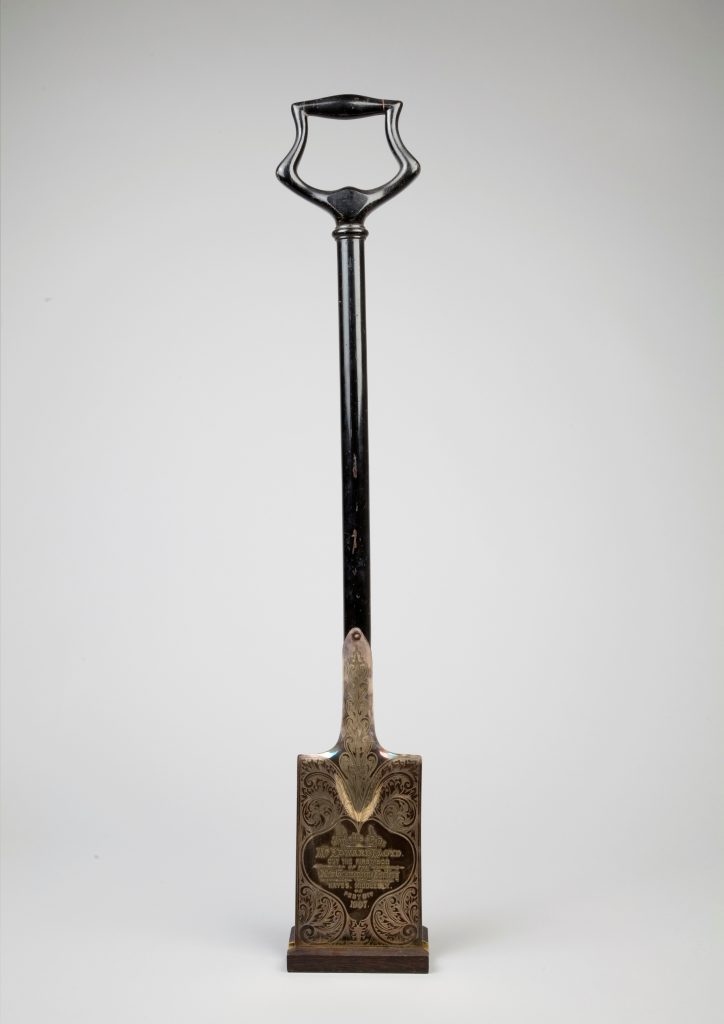
Ceremonial Spade – EMIAT.1050
This ceremonial spade was used by the tenor Edward Lloyd to cut the first sod of the Gramophone Company’s factory in Hayes. The sod-cutting ceremony took place on February 8th 1907, the site was to become the Record Factory.
This ceremonial spade has an ebonised wooden shaft and handle. The blade is fixed to the shaft by five screws, one at the front and four at the rear. The blade itself appears silver, but no hallmarks are found. There is an incised floral motif running all around the front of the blade, the reverse is left blank. There is an inscription in the centre of the blade, on the front.
Date: 1907
Hayes Factory Brick – EMIAT.227
This is a red brick from The Gramophone Company’s Boiler House at the Hayes Factory. It has been waxed and mounted on a wood plinth. The brass plaque reads ‘Thorn EMI Hayes Boiler House Chimney Brick 1911-1988’
Date: 1911
Photographer: www.thomasbutlerphotographer.com
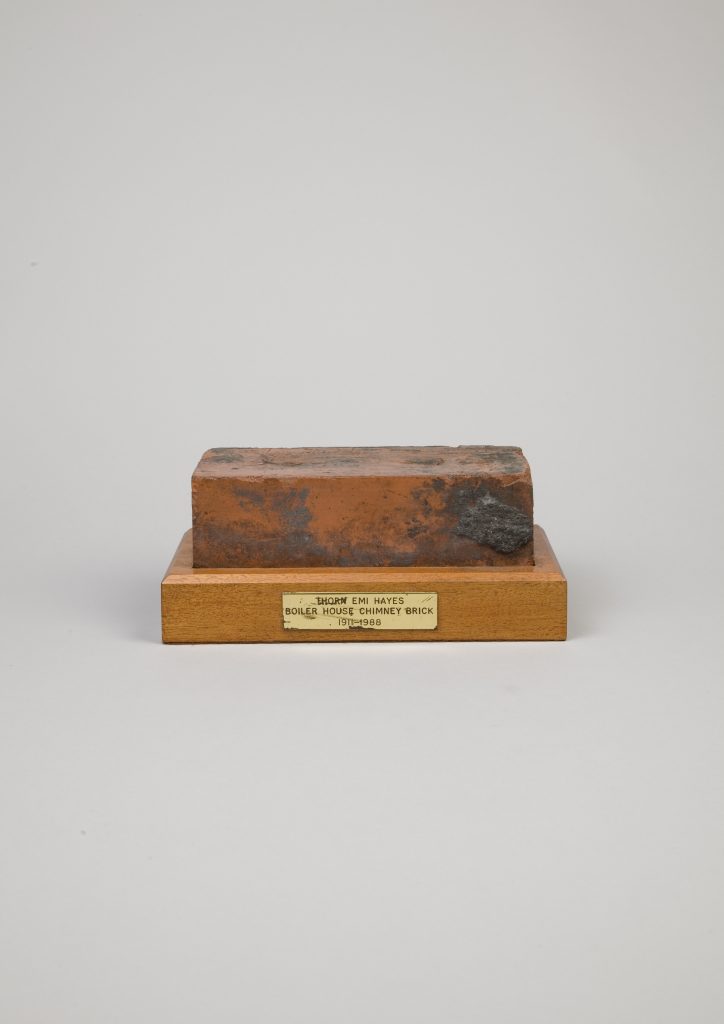
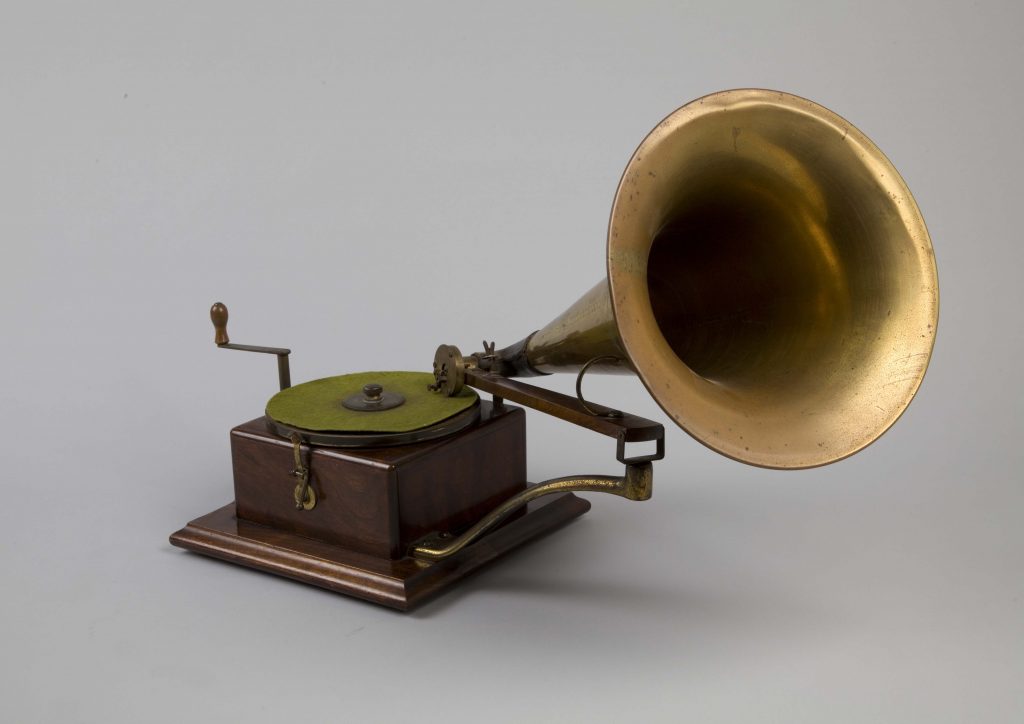
Gramophone Company Ltd. Style No.5 – EMIAT.27
The ‘Style No.5 Gramophone’ is the direct descendent of the original Trade Mark Model. Based on Eldridge Johnsons improved version, it was first available 1898. The spring is enclosed in a nickelled cast-iron casing protruding from the rear of the machine. The motor is housed in an oak case on a similar base, from which a cast-iron arm rises upward to support the oak travelling arm.
Production: The Gramophone Company Ltd,
Date: 1897
Photographer: www.thomasbutlerphotographer.com
Capacitance Altimeter EMIAT.357
This is a Test Set for a Capacitance Altimeter developed by A D Blumlien. Work began on low-level altimeters in the summer of 1940, with many flight trials carried out in Wellington, Whitley, Halifax, Stirling and Lancaster bombers. Such an instrument allowed ‘blind landing’; low-level bombing and torpedo releases; mine laying and parachute dropping.
Production: EMI
Place: Hayes, England
Date: 1940-1943
Photographer: www.thomasbutlerphotographer.com
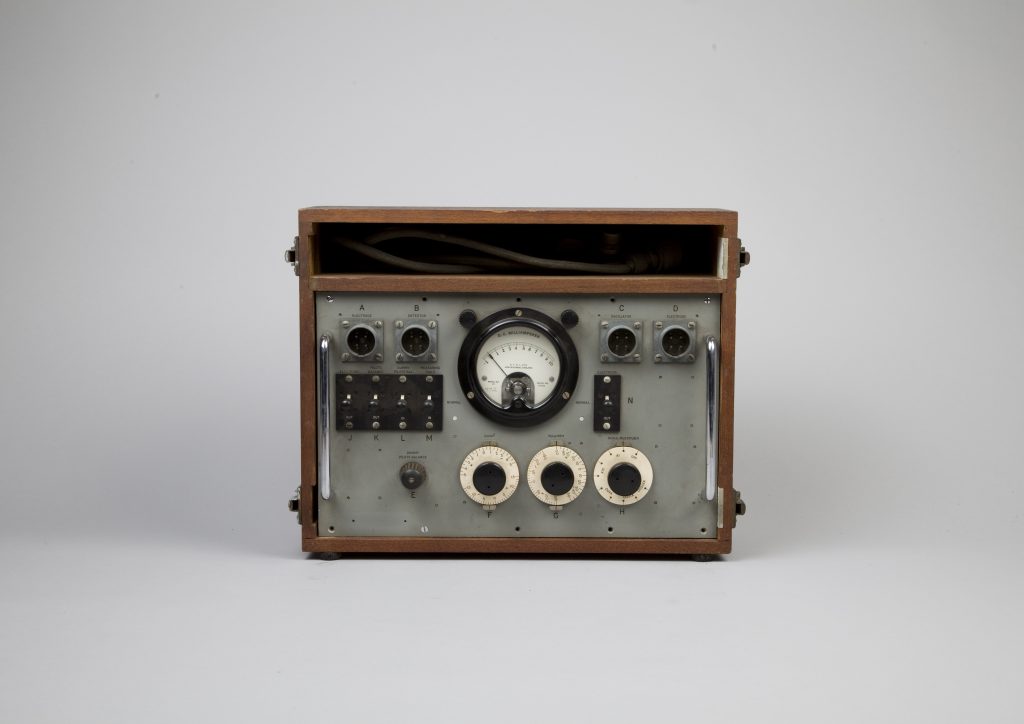
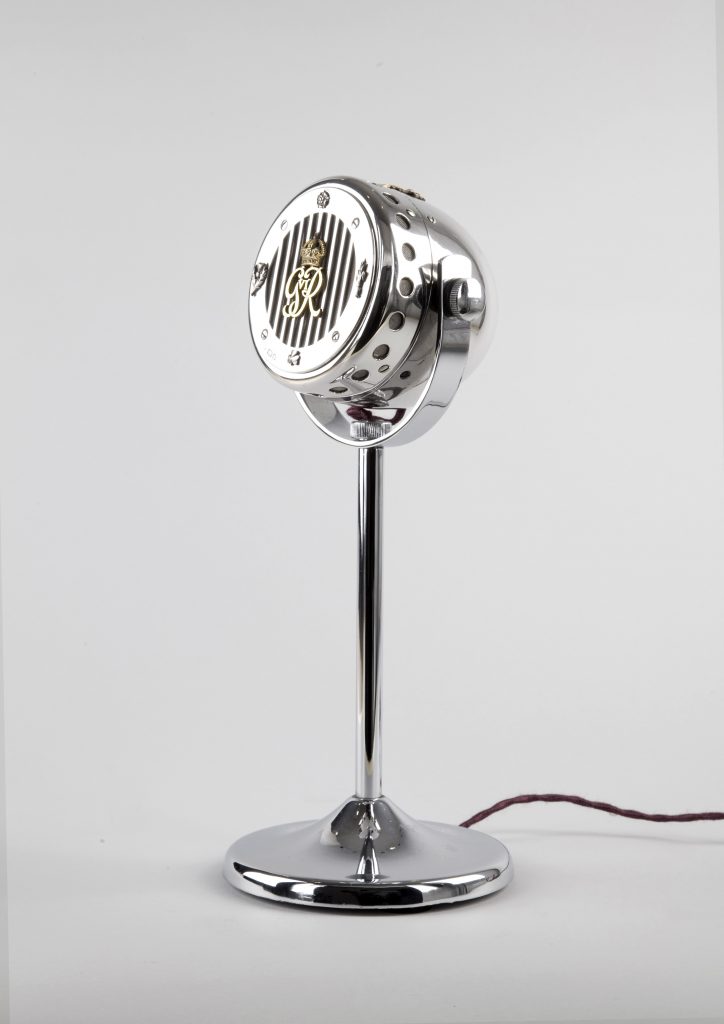
H.M. King George VI Microphone – EMIAT.219
This microphone was specially made for H.M. King George VI by EMI. The silver cone microphone rests on a desk-style stand. The front of the microphone is decorated with a silver rose, leek, thistle and shamrock symbolising the countries which make up Great Britain. In the middle of the microphone, there is a gilt cypher, whilst on top there is a gilt coat of arms. It was first used for the opening of the Maritime Museum at Greenwich on the 27th of April 1937.
Production: EMI & Goldsmiths & Silversmiths Co. Ltd.
Place: England
Date: 1936
Photographer: www.thomasbutlerphotographer.com
Luftwaffe Aerial Map of EMI Hayes Factory – EMIAT.521
This is an aerial map of the EMI Hayes Factory complex. It was retrieved from Luftwaffe premises after WWII.
Place: Germany
Date: 1942
Photographer: www.thomasbutlerphotographer.com
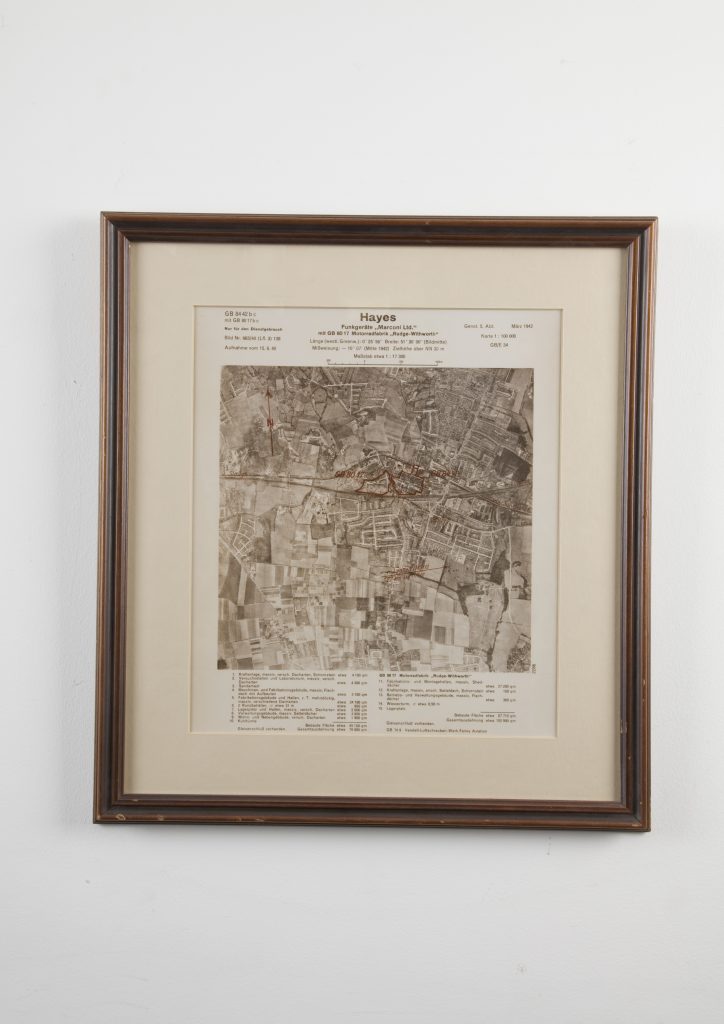
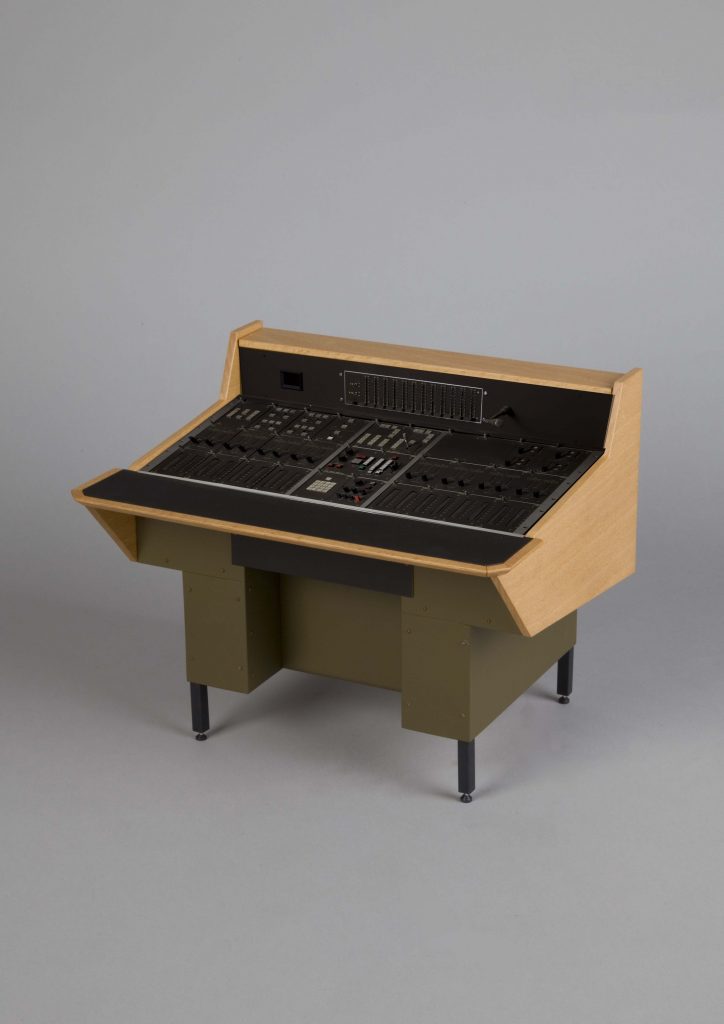
Digital Mixing Desk Model – EMIAT.390
This is a model of the world’s first professional quality digital sound mixer. Production: EMI Central Research Lab Place:
Hayes Date: 1970/80
Photographer: www.thomasbutlerphotographer.com
Lambert Typewriter – EMIAT.229
In 1900, The Gramophone and Typewriter Ltd was formed in London to acquire to The Gramophone Co; the rights to manufacture and sell the Lambert Typewriter; and the remaining shares in Deutsche Grammophon. The typewriter was seen by Owen as insurance against the gramophone’s failure, but it subsequently proved to be an unsuccessful venture and, by 1904, it had been dropped. In 1907 the company changed its name back to The Gramophone Co.
Place: England
Date: 1900
Photographer: www.thomasbutlerphotographer.com
